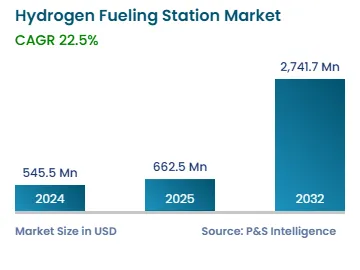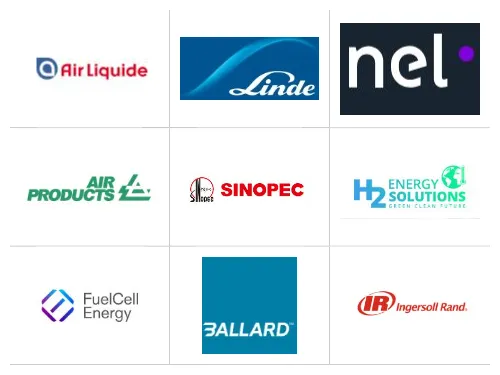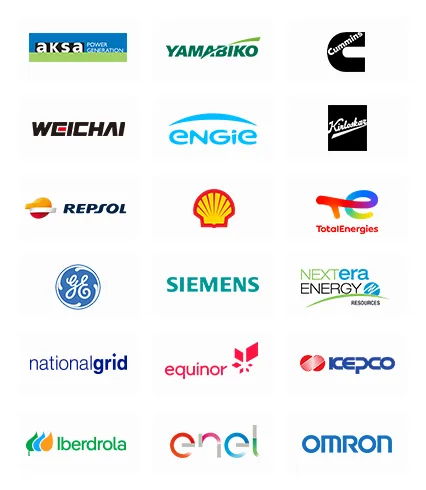Hydrogen Fueling Station Market Future Prospects
The global hydrogen fueling station market is expected to reach USD 2,741.7 million in 2032 at a CAGR of 22.5% during 2025–2032 from USD 545.5 million in 2024.
The key drivers for the market are the growing population, increasing number of vehicles in operation, rampant urbanization, rising disposable income, government initiatives for clean transportation, and worsening air quality.
The threatening effects of global warming are becoming alarming, and so is the concern for the environment, making it imperative to find solutions to combat the crisis. There is an increasing inclination toward zero-emission vehicles and the implementation of strict environmental regulations on the usage of conventional fuels. Hydrogen, a clean and renewable energy carrier, becomes a wise choice and better alternative to fossil fuels.
Hydrogen accounts for an estimated 75% of the universe’s mass, making it the most-abundant element; however, harnessing it directly from air is difficult. The production of hydrogen can be done from various sources, but the use of renewable resources, such as biomass and solar and wind energy, is more sustainable than those utilizing coal and natural gas. Additionally, the byproducts of H2 combustion are water vapor and heat, making it a preferable fuel for all types of transportation applications. All these factors have led to a manyfold increase in the demand for hydrogen fueling stations across the globe.
Essentially, the rising demand for hydrogen-powered fuel cell electric vehicles is driving the hydrogen fueling station market advance. The adoption of hydrogen gas in transportation is transforming multiple industries and their operations by helping them reduce their carbon footprint.
Additionally, hydrogen fueling stations have become essential in today’s times owing to the rapid urbanization, mounting population, its high disposable income, and its increasing requirements for vehicles. The eco-friendly aspect of hydrogen significantly influences the decisions of consumers. As a result, the shift in the preference for carbon-free vehicles is propelling the demand for the associated infrastructure, including hydrogen fueling stations. Government and private organizations are increasingly supporting and investing in infrastructure development for carbon neutrality in the transportation sector.



